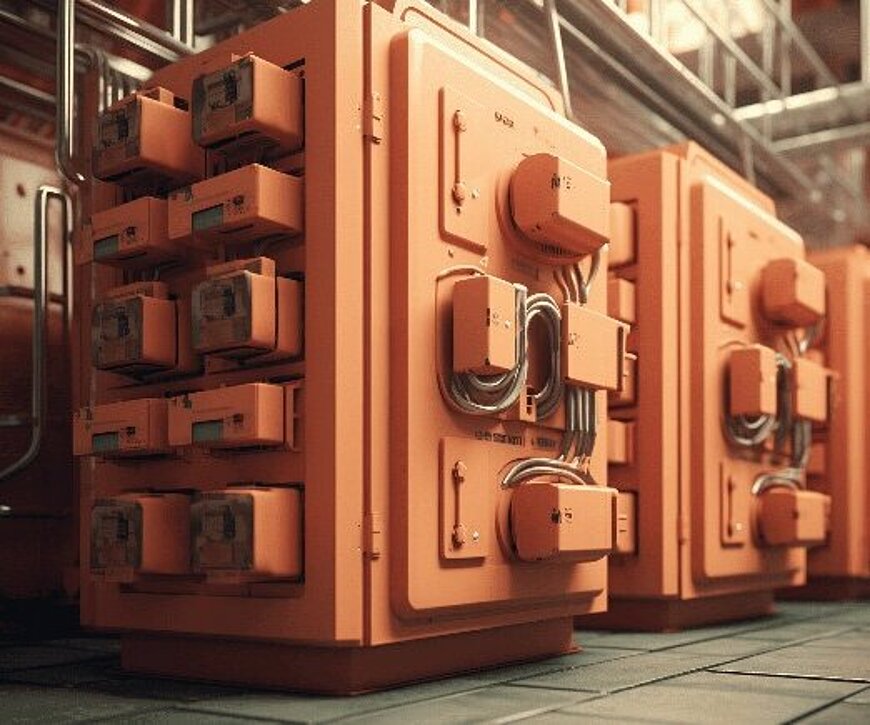Energy storage is as important as renewable energy. But how do we store our power then?

Storing renewable power is as crucial as producing it. We delved into some of the main battery storage technologies.
Batteries come in any form, shape, and, most importantly, chemistry. In the puzzle called energy systems of the future, they represent an essential piece to fully exploit the potential of renewable power and limit one of its most prominent downsides: inconsistency. To put wind and solar on par with fossils, stashing energy for later use is essential to access power at every moment. Moreover, batteries are also of great help to the electricity grid, balancing supply and demand, making the grid more stable, and improving its efficiency.
Why this is important: Storing renewable power is as crucial as producing it. In this article, we explore some of the main battery storage technologies, highlighting their pros and cons.
Therefore, the importance of batteries is indisputable. There are plenty of battery technology options, ranging from established chemistry to newer and more sustainable ones. We delved into three key battery technologies for the present and the future of the stationary energy storage sector with Dirk van Asseldonk. He is the topic leader of battery systems at Battery Competence Cluster NL, the innovation program working to foster and reinforce the Dutch battery ecosystem.
Lithium-based batteries
Lithium-based batteries are, at the moment, the most widespread battery technology. Phones, laptops, and cars all run on them. Within this segment and beyond, lithium-ion chemistry is the most used one, powering portable electronics and electric vehicles (EVs). A high energy density – the amount of energy stored in them – long cycle life and low maintenance made them so widespread. One of the most prominent lithium chemistries is lithium-nickel-cobalt-manganese (NCM), which performs well but relies on more hard-to-mine materials and is more prone to catching fire. For this reason, Tesla switched to lithium-iron-phosphate (LFP) batteries for some of its models, with Model Y sold in China already powered by these cells.
Lithium-ion batteries are also being used for renewable energy storage. “They can rapidly respond to the energy grid and work all the time,” underlines van Asseldonk. The other side of the coin is that Europe depends on other geographies to source what became the white gold. Australia, with hard rock mining, and South America, with evaporation ponds – both polluting and resource-intensive methods – are where the material originates, with China controlling most of its refining. As a result, the Netherlands and Europe depend on imports. Exceptions exist, such as Vulcan Energy, which will extract lithium from geothermal brine in Germany. Meanwhile, recycling still needs to pick up momentum.
“As a society, we should use lithium-based batteries, especially the NCM, in application areas without alternatives. Their high energy density makes them ideal for cars, but sourcing their materials makes us dependent. However, there is no other alternative to balancing short-term peaks and falls. But to store wind or solar energy for hours or days, we should not use lithium, which calls for very high capacity but not for very high power. And lithium is then not so cheap anymore: the upcoming alternatives are cheaper in terms of capacity,” the expert stresses.
Flow batteries
One of the technology options van Asseldonk hints at is flow batteries. Unlike conventional batteries, they store energy in liquid electrolyte solutions in external tanks. An electrolyte is a substance that conducts electricity, facilitating ion movement through a reaction cell, where electrochemical reactions to produce or store energy occur. These batteries can also utilize water-based solutions to stash power. A feature that sets these batteries apart is their ability to separate power and energy components. This means that the size of the electrochemical cell determines power, and the size of the external tanks determines the energy storage capacity. As a result, greater design flexibility is possible.
“Flow batteries represent a good option for long-term duration energy storage. Another great advantage is that they are intrinsically recyclable because they can be made with sustainable and abundant materials. Take Elestor, which uses sea-water bromide,” van Asseldonk explains. However, standard flow battery technologies use vanadium, a metal abundant in Russia, China, and South Africa.
Elestor is a Dutch company that is developing flow battery technology. In addition to bromine, hydrogen is also used as an active material, aiming to deliver the lowest possible storage costs per MWh. The Alphen aan de Rhijn-based AQUABATTERY uses water and table salt. Sustainable materials can be at the heart of long-term energy storage solutions, albeit energy density remains lower than more mature battery technologies.
Sodium-ion batteries
Similarly, sodium-ion batteries (NIBs) are also emerging as a promising battery technology, mainly because of the ample availability of sodium – the mineral table salt is derived. This battery uses sodium ions to carry electrical charges between the negative and the positive electrodes. In comparison to lithium-ion ones, these batteries are not only more sustainable but can be cheaper. Considering the MWh-scale capacity to be deployed to complement the grid, having a low-cost storage medium can make all the difference.
As proof of this technology’s potential, Swedish battery maker Northvolt recently developed a sodium-ion battery, adding it to its portfolio. The cell proved more cost-effective and sustainable than NMC or LFP options. With safety as one of its other pros, sodium-ion batteries have a lower energy density.
NIBs represent attractive prospects in the stationary storage energy sector, too. In this segment, lifetime operational costs matter more than weight or volume. Although lithium prices have been going down considerably in the past months, sodium-ion solutions are likely to represent a valid alternative in the future as research to make them more efficient is conducted.
The role of the Dutch battery ecosystem
According to van Asseldonk, the Dutch battery ecosystem has awakened since the launching of Battery Competence Cluster NL two years ago. “We still have a lot of work to do, but the ecosystem is rapidly developing. Now, there is a sense of urgency that pushes us to move. It is not about having a battery manufacturing plant in the Netherlands; it’s about having an industry that depends less on extra-European suppliers.”
To this extent, the choice is to support battery companies that work with abundant and available base materials. If the real challenge in the years to come is having robust storage systems that can stash power for days or even weeks, then the Netherlands is in a good position.
“Looking at the world scale, around fifteen companies have a solution for long-term electricity storage. Five of them are in the Netherlands. This is a testament to how good the ecosystem is doing,” he says.
With lithium-ion covering the minutes-to-hours storage demand and flow batteries the hours-to-weeks one, hydrogen will cover longer storage applications. However, converting hydrogen into electricity and vice versa causes significant energy losses, which will need further research. To such a degree, the Dutch still want to be a global reference point, establishing a long-duration battery expertise center. “We want to create it, and if we can accomplish it, we can be a magnet for innovation worldwide. On a world scale, this segment has the potential to grow towards ten percent of the market, a huge share for a country like the Netherlands,” van Asseldonk concludes.
